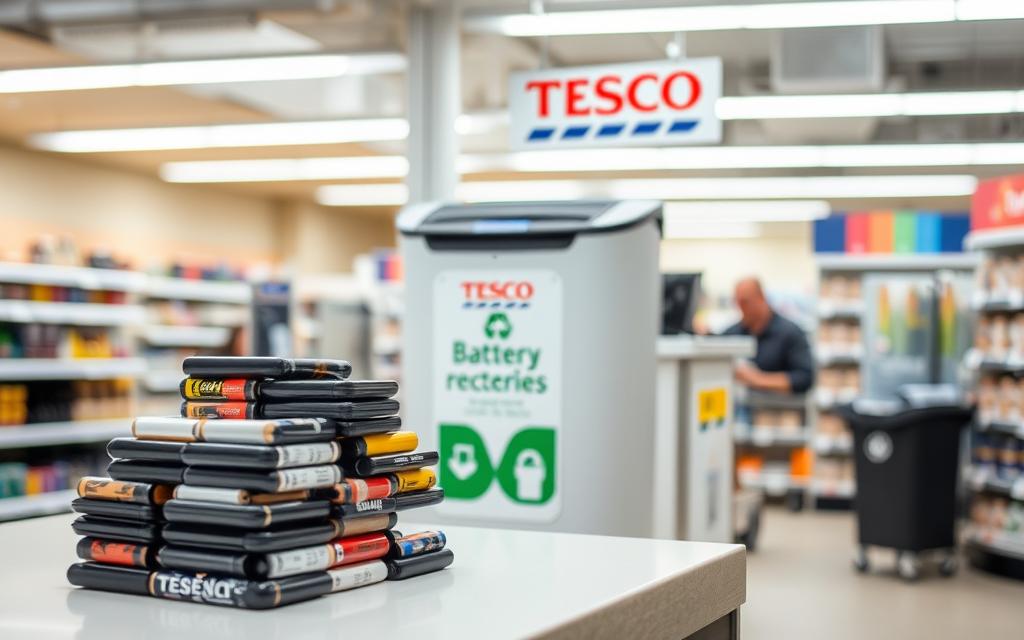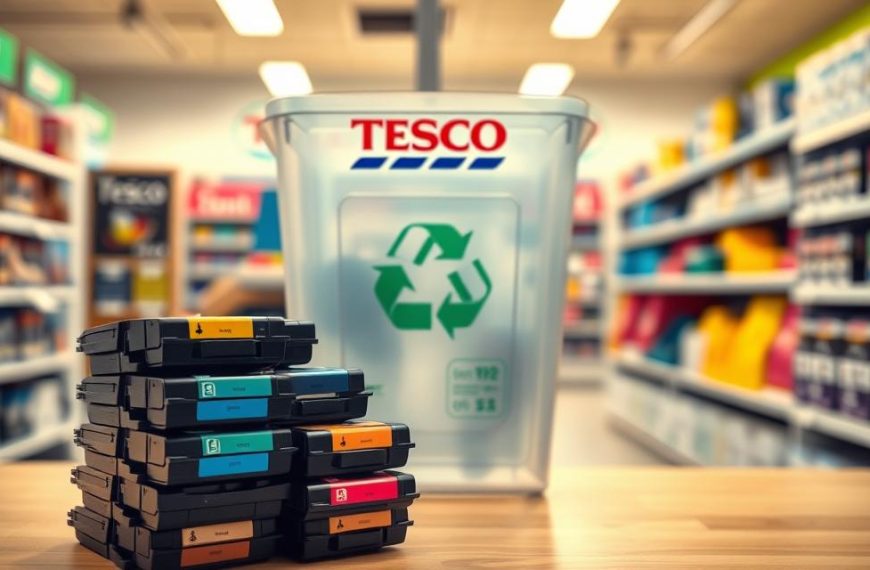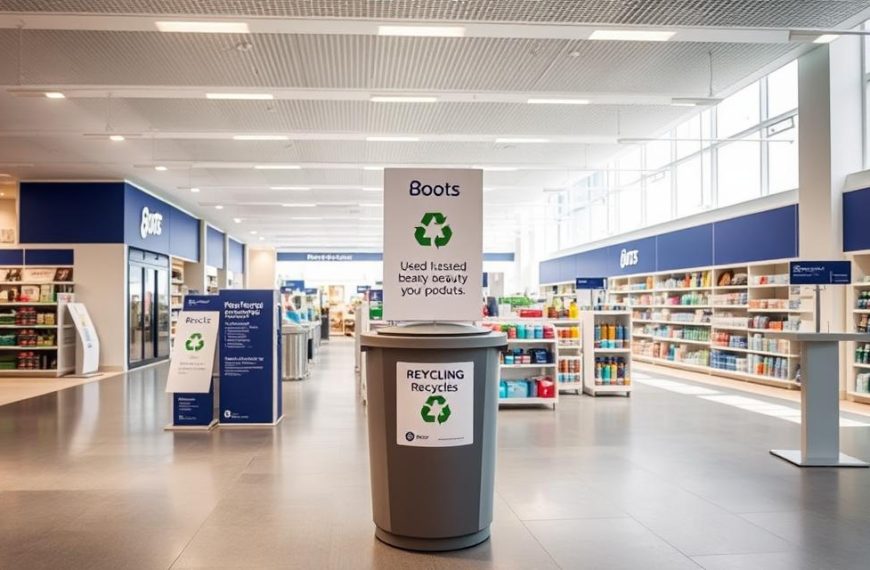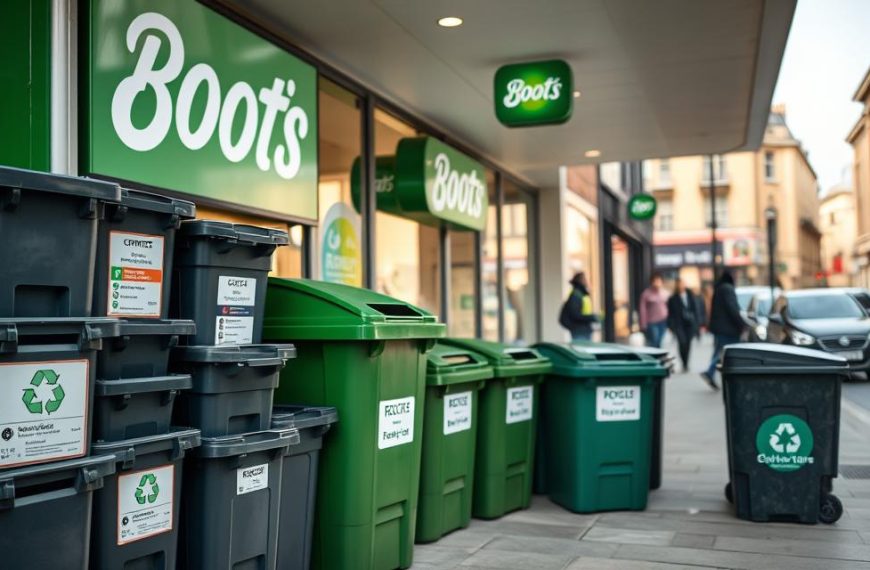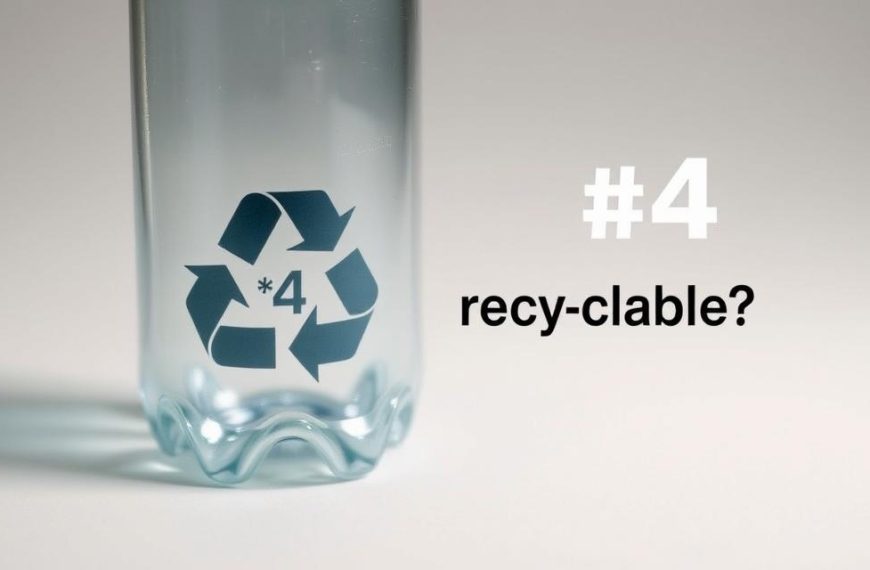The improper disposal of batteries poses a significant threat to the environment. In the UK, the average person uses 21 batteries each year, contributing to a substantial amount of waste. Batteries contain hazardous components that cannot be disposed of in regular household waste, making proper disposal crucial.
Tesco, a leading retailer in the UK, is committed to environmental sustainability through its comprehensive battery recycling programme available across approximately 825 store locations. This initiative aims to encourage the responsible disposal of batteries and reduce waste.
In this guide, we will explore how to find Tesco’s battery recycling points, the types of batteries accepted, and the step-by-step process for recycling. By recycling batteries, we can significantly reduce the environmental harm caused by sending them to landfill.
The Importance of Battery Recycling
Recycling batteries is essential for conserving valuable resources and reducing environmental hazards. Batteries contain harmful substances that can pollute the environment if not disposed of properly.
Environmental Hazards of Improper Disposal
Improper disposal of batteries can lead to significant environmental hazards. Batteries contain toxic materials like lead, mercury, and cadmium, which can contaminate soil and water if sent to landfills. Proper recycling helps mitigate these risks, ensuring that these hazardous materials are handled safely.
Resource Conservation Benefits
Battery recycling offers numerous resource conservation benefits. By recycling batteries, we can recover valuable materials such as lithium, cobalt, nickel, and zinc. These materials can be reused to manufacture new batteries, reducing the need for energy-intensive mining operations. Recycling also supports a circular economy by keeping valuable resources in productive use.
The process of recycling batteries conserves energy and reduces the environmental impact associated with mining and processing raw materials. It is estimated that recycling batteries requires significantly less energy than producing new ones from raw materials. By conserving these resources, we can also help keep battery prices lower for consumers.
Understanding Battery Recycling at Tesco
Tesco has implemented a comprehensive battery recycling programme to encourage responsible disposal of batteries. This initiative is part of Tesco’s commitment to reducing electronic waste and promoting sustainability.
Tesco’s Battery Recycling Programme
Tesco’s battery recycling programme allows customers to recycle a wide range of battery types at their stores. The programme is designed to be convenient, with designated collection points for customers to deposit their used batteries. By recycling batteries, Tesco aims to minimize the environmental impact of battery waste and conserve natural resources.
Types of Batteries Accepted
Tesco accepts various types of batteries, including AAA, AA, 9V, button cell batteries, and rechargeable batteries from portable electronic devices such as laptops, mobile phones, cameras, cordless power tools, and watches. The store’s recycling programme is designed to be inclusive, allowing customers to recycle different types of batteries in one place.
It’s worth noting that while Tesco accepts a broad range of batteries, certain types, such as car batteries or industrial batteries, may not be accepted. Customers are advised to check with their local Tesco store for specific guidance on disposing of larger batteries.
How to Find Battery Recycling Points at Tesco
Tesco has made it easy for customers to recycle batteries by providing clearly marked collection points. These are typically located near store entrances, customer service areas, or alongside other recycling facilities within Tesco locations.
Store Locations with Recycling Facilities
Tesco stores with battery recycling facilities are widespread across the UK. Customers can visit their local Tesco store and look for the designated recycling points. Store staff are trained to direct customers to these facilities.
In-Store Collection Point Locations
Within Tesco stores, the battery collection points are designed to be easily identifiable. They are usually marked with clear signage and are located in convenient areas. Customers can deposit their used batteries in these designated containers, which are designed to safely store batteries until they are collected for recycling.
For assistance, customers can ask Tesco staff, who are trained to help locate the recycling facilities. The visibility and accessibility of these collection points encourage customer participation in the recycling programme.
Step-by-Step Guide to Battery Recycling Tesco
Tesco makes battery recycling easy with a clear and convenient drop-off process. By following a few simple steps, customers can contribute to a more sustainable environment.
Preparing Batteries for Recycling
Before dropping off batteries, it’s essential to prepare them correctly. Remove batteries from devices and tape the terminals of lithium batteries to prevent them from coming into contact with other metals and causing a fire. This simple step ensures safe handling and processing.
- Remove batteries from devices and appliances.
- Tape the terminals of lithium batteries.
- Place batteries in the designated collection containers.
The Drop-Off Process
The drop-off process is straightforward: simply place prepared batteries in the clearly marked collection containers
No paperwork or registration is required, making it an accessible service for all customers. Tesco staff are trained to assist with any questions or concerns regarding battery recycling.
- No registration or paperwork is needed.
- Tesco staff are available to assist with queries.
- Batteries are collected in designated containers.
Recycling Different Types of Batteries
Battery recycling at Tesco is not limited to one type; it encompasses a range of batteries from household to electronic device batteries. This comprehensive approach ensures that various battery types are disposed of in an environmentally responsible manner.
Household Batteries (AA, AAA, 9V, etc.)
Household batteries, including AA, AAA, and 9V batteries, can be recycled at Tesco. These batteries contain materials such as zinc, cadmium, and nickel, which can be recovered. To recycle them, simply place the batteries in the designated recycling bins at Tesco stores. It’s essential to tape the terminals of batteries to prevent them from coming into contact with other metals and causing a fire.
Laptop and Mobile Phone Batteries
Laptop and mobile phone batteries, typically lithium-ion, require special handling due to their chemical composition and potential fire risk. These batteries contain valuable materials like lithium, cobalt, and rare earth elements, making recycling crucial. When recycling laptops or mobile phones, it’s recommended to remove the battery if possible. If not, the entire device can be recycled. Before recycling devices with built-in batteries, ensure that personal data is erased. Tesco’s recycling programme accommodates these batteries, contributing to the recovery of valuable materials and reducing electronic waste.
Environmental Impact of Battery Waste
The improper disposal of batteries poses significant environmental risks. When battery waste is not managed properly, it can lead to severe ecological damage.
Soil and Water Contamination Risks
The hazardous materials in batteries can leach into the soil and water, causing contamination. This can have detrimental effects on ecosystems and human health. The risks associated with waste from batteries are substantial, and proper disposal is crucial to mitigate these risks.
Hazardous Materials in Batteries
Modern batteries, especially those in laptops and other electronic devices, contain hazardous materials like Lithium, Cobalt, Nickel, and Cadmium. These materials can be toxic and pose significant environmental challenges if not disposed of correctly. The presence of such materials like lead, mercury, and cadmium in batteries underscores the need for responsible recycling practices.
UK Battery Recycling Statistics and Regulations
The landscape of battery recycling in the UK is defined by key statistics and stringent regulations. Understanding the current state of affairs is crucial for appreciating the role of retailers like Tesco in promoting sustainable waste management.
Current Recycling Rates
The UK has made significant strides in battery recycling, with recycling rates showing a positive trend. As of the latest reports, the UK’s battery recycling rate has improved, reflecting efforts to enhance waste management practices. Battery recycling initiatives have been instrumental in this progress.
| Year | Battery Recycling Rate (%) |
|---|---|
| 2018 | 45% |
| 2020 | 52% |
| 2022 | 60% |
WEEE Directive and Retailer Obligations
The WEEE Directive, an EU law aimed at reducing electronic waste, has significantly influenced UK battery recycling regulations. Although the UK has exited the EU, the directive’s principles continue to shape UK law. Retailers like Tesco, selling more than 32kg of batteries annually, are required to provide in-store collection facilities for used batteries. This obligation has driven Tesco’s commitment to sustainable waste management practices.
Compliance mechanisms and reporting requirements under the WEEE Directive ensure that retailers adhere to their obligations, contributing to improved battery recycling infrastructure and rates.
Alternative Battery Recycling Options in the UK
UK consumers can access various battery recycling alternatives, complementing Tesco’s programme. This ensures that individuals can choose the most convenient method for recycling their batteries.
Local Council Recycling Centres
Many local councils in the UK operate recycling centres that accept batteries for recycling. These centres provide a convenient drop-off point for household batteries and other recyclable waste. Residents can visit their local council’s website to find the nearest recycling centre and its operating hours.
Manufacturer Take-Back Programmes
Several major electronics manufacturers, including Dell, Apple, and HP, offer take-back programmes for batteries, particularly for laptops and mobile phones. These programmes allow consumers to return old batteries to the manufacturers, either by mail or in-store, promoting responsible waste disposal. Some manufacturers also offer incentives, such as discounts on new products, for recycling old devices.
Conclusion: Making a Difference Through Responsible Battery Disposal
Recycling batteries at Tesco is a simple, effective way to make a positive environmental impact. Tesco’s battery recycling initiative represents a significant commitment to environmental responsibility, offering customers convenient access to proper disposal methods across hundreds of store locations.
By participating in battery recycling programs, individuals can make a tangible difference. Studies show that nearly 80% of consumers want to contribute to environmental preservation for future generations. The collective impact of recycling even a small number of batteries contributes to significant environmental benefits and the recovery of valuable resources.
By incorporating battery recycling into your regular shopping routine, you can make sustainable practices more convenient and achievable. We encourage you to use Tesco’s battery recycling services and spread awareness about responsible battery disposal. Together, we can drive meaningful environmental protection and resource conservation.
